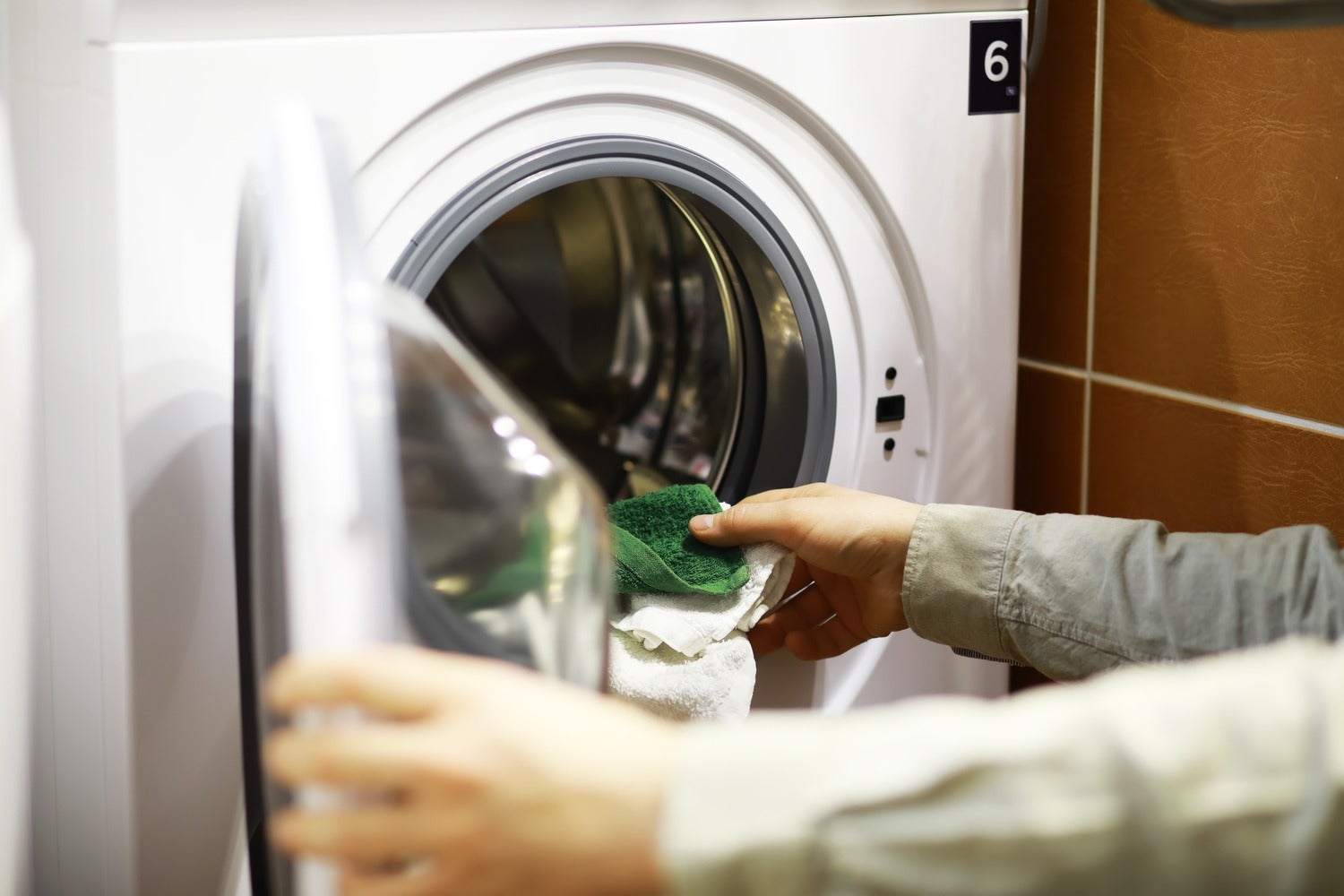Unless you’ve embraced a life of nudity, you’ve got loads of dirty laundry to deal with. But spin-cycling and tumble-drying our clothes sheds more than ketchup stains, perfumed lotions, and sock sweat. One load of laundry can emit hundreds of thousands—by some estimates even up to 10 million—teeny, tiny microfibers. The more poorly made, plastic-based textiles we throw into the mix, the worse this specific microplastics problem becomes.
The consequences are particularly bad in the world’s oceans, where wildlife mistake the particles for food, which can cause a host of problems including damage to digestive and reproductive systems, gills, and immune responses. Those toxic effects are also related to the more than 16,000 potentially hazardous chemical additives in plastic products, including those used to dye clothing or make it stain-resistant or wrinkle-free.
Putting aside issues inherent to the clothing industry itself, experts we talked to say a key to stopping the flow of pollution is to trap the microfibers before they even reach wastewater treatment plants. Unfortunately, the average American washing machine doesn’t snag these small bits by default. Oregon Sen. Jeff Merkley has introduced a federal bill to require the addition of filters on washers. Similar legislation was proposed, but failed, in California, though France and Australia have put such measures in place.
Since it takes years or longer for regulations or international efforts like a treaty to address the plastics problem to solidify, this is one environmental exigency where individual actions may currently be the best answer: Here are five ways to minimize the amount of microplastics that escape during your clothes-washing routine.
Opt for natural fibers
The microfibers that shed from our clothing—particularly those made of polyester—are among the most pervasive microplastics in the ocean. Researchers say that laundering our duds is a primary culprit: Between 1950 and 2016, a cumulative 6.17 million tons of microfibers leaked from laundry around the globe, one 2020 paper estimates.
That’s why experts recommend natural fibers like cotton over synthetics—and paying attention to the quality of the garments you buy. Cotton will still shed fibers, says Judith Weis, a marine biology professor at Rutgers University who also studies environmental impacts of microplastic pollution, but they typically don’t linger in the environment the way their plastic-based counterparts do. If you’re shopping—either secondhand or regular retail—also remember that the tighter the weave of the threads in a garment, the less they shed. Polyester fleece, a very loosely woven material, for example, is one of the worst microplastic offenders on the market.
Add a filter
If we’re talking about clothes you already own, the No. 1 thing anyone can do is use a microplastics filter. These barriers, such as the LUV-R and Filtrol, typically attach to the outgoing plumbing connection and run $150–$200. “It’s probably the easiest thing to do to make a big difference,” says Susanne Brander, an ecotoxicologist and Oregon State University associate professor. The filters vary in terms of effectiveness, but one 2020 analysis found that the best performing model can nab 78% of particles, and another found a different fiber-trapper to snag 74%. (It’s important to note that there’s no standard for measurement here, which is why there tends to be variability between company claims and results.)
For people who don’t own their washing machines, other microfiber-filtering gadgets like the Cora Ball (a pine-cone-like silicone orb you toss in the wash) and Guppyfriend (a fiber-trapping bag) can help. At $30–$40, they’re more affordable than in-line filters, but they’re not quite as effective. That same 2020 study found that the Cora Ball captured up to 31% of the microfibers in a given wash load, and the Guppyfriend snagged up to 54%.
Wash full, cold loads
Washing in cold water can also reduce the number of microfibers a load of laundry expels. Hot water can encourage shedding, Brander says, since higher temperatures tend to degrade certain types of plastics. This small shift in laundry habits can also cut down on your electricity usage (and therefore potential for planet-warming emissions), since around 90% of the power a washer gobbles up goes toward heating the water.
The water-to-fabric ratio in a load also plays a role in the volume of microfibers washing off our duds. Cycles with high volumes of water, like the delicate setting, release more particles than larger loads run in normal cycles. One 2019 study found that delicate wash cycles emitted 800,000 more microfibers per wash. Reducing the water-to-fabric ratio by making sure each laundry load is full can also help cut back on friction that causes microfiber shedding, some experts say.
Air-dry
We’ve said it before, and we’ll say it again: Air drying your clothes is among the easiest planet-saving moves around. It’s massively energy-efficient, and it also reduces the amount of potentially harmful microfibers your laundry routine spews out. According to an analysis published in 2022, mechanically drying a load can emit as many, and sometimes even more, microfibers into the air than those sent down the drain during washing. One recent report indicates that drying can release more than 500,000 microfibers to the air every 15 minutes.
Skip detergent sheets and pods
Detergent pods and dissolvable sheets might eliminate single-use plastic jugs, but there’s a catch: They may also create microplastic waste. That’s because many of them are actually bound together with a type of plastic called PVA. (Same goes for dishwasher pods, by the by.) “What I’d recommend is to use something that’s not further contributing to the problems with plastics and chemicals,” Brander says.
Results are mixed about whether the amount of detergent—and what kind—really matters for reducing microfibers, in part because there’s a lack of scientific standards researchers can use to compare studies. Brander says to keep it simple. Read the ingredients and avoid anything with phthalates or a long list of other chemicals. This will probably mean choosing a powder that comes in a box instead of a big jug of perfumy liquid soap.

